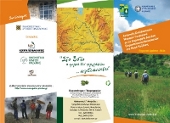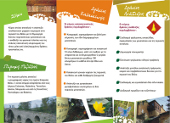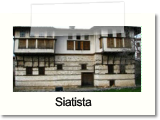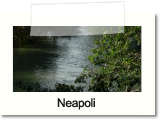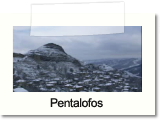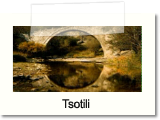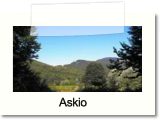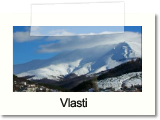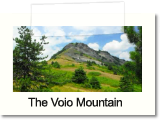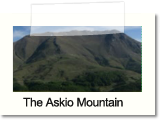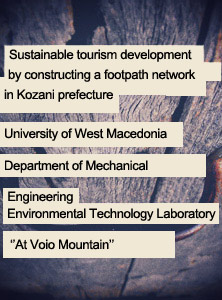
Volunteers
Meteorological indicators
| Fire Indicator |
| Fog Indicator |
News
Project presentation
FUNDING
Partners – Contact
The Villages of Voio
The Villages of Voio
Siatista, Pentalofos, Vlasti, Haravgi, Namata, Eptahori, Pelekanos, Skalohori. Beautiful and peculiar names that correspond to their natural attraction and history.
The slopes of Voio, lush in vegetation and rich in waters, have contributed to the creation of a network of traditional settlements, known as Mastorohoria, or Kastanohoria. They are one of the four major units of stone-built settlements of Northern Greece, equivalent to Zagorohoria, the villages of Grammos and of Pilio. More than forty small picturesque settlements are located one after the other in the mountainous and semi-mountainous zone of the mountain, from 700 to
In some of the villages, many buildings are not made of stone, or may be stony but smaller than in the past. This is due to the fact that they were burned down in the period between 1943 and 1944 by the German occupational forces, due to their leading role in the Resistance. On the day of the fire, their inhabitants were hidden in neighboring forests and watched their beautiful, two-storey homes perish in the flames. Afterwards, to protect themselves from the harsh winter that ensued, they were forced to rebuild them quickly with what materials remained, while others returned after the war and restored them with new materials. Some of the villages that experienced this disaster were Tsotyli, Vythos, Rodohori, Eptahori, Morfi and Koryfi, which nevertheless managed to preserve exquisite elements of tradition, thanks to the love of their inhabitants.
The villages of Eastern Voio, built on mount Askio, despite their common history, customs and traditions, are quite distinct in color and size. They are less in number, distant from each other and considerably larger. In western Voio, with the exception of Neapoli, Tsotyli and Pentalofos, the rest of the settlements are small. On the contrary, in Eastern Voio we find in essence small towns built on the mountain’s slopes, at an altitude of 750 to
It is worth mentioning that in many cases villages appear in pairs, possibly in order to supplement each other and increase the feeling of security. Known pairs of villages include Neapoli-Tsotyli, Vlasti-Namata, Koryfi-Hrysavgi, Dilofo-Dasyllio, Morfi-Agia Sotira, Polykastano-Zoni, Damaskinia-Dragasia, Lagka-Vrahos, Kotyli-Kypseli, Skalohori-Nostimo, Krimini-Rodohori and Kalloni-Trikorfo.
During summer months, settlements awake from their hibernation and the daily hustle and bustle returns. The cafes reopen, barbecues are lit and the sound of the clarinet echoes in the slopes and valleys.
Voio remains authentic, because there is a genuine desire for the preservation of local architecture and tradition and not merely their restoration as part of a scenery. The stony alleys still bear the aroma of knit bread and pies baked by housewives in their homes, the elderly still narrate stories from war and migration, while local customs are an integral part of the daily routine. Last but not least, the people, simple and creative, are unbelievably gentle and polite.
GUIDE "IN PATHS OF VOIO"
Topics of Special Interest
- ‘‘Architecture - The Mastorokalfades of Voio’’
- ‘‘The Stony Bridges’’
- ‘‘The Villages of Voio’’
- ‘‘The Visitable Monasteries of Voio’’
- ‘‘The Primeval Oak Trees’’
- ‘‘Ontria – A Rare Geomorphological Phenomenon’’
- ‘‘Nature’s Wonders – Footsteps and Human-like Rocks’’
- ‘‘The Waterfalls of Skotomeno Nero – A Natural Monument’’
- ‘‘The Artificial Lake of Vythos – A New Wetland’’
- ‘‘River Pramoritsa and its Waterfalls’’
- ‘‘The Enormous Cliffs of Haros at Pyrgos Kotylis’’
- ‘‘The Peculiar Geology of Mount Voio – Rare Fossils’’
- ‘‘Voio and the Mushroom Madness’’
- ‘‘Voio - The People’’
- Zoupaniotikos Ailias – Voio’s trademark
- Taliaros and its Role during the Civil War
- Thematic Feasts in the Villages of Voio
- Ecology of Voio
- The European Path E6
- Paliokrimini and the Destroyed Village
- Local Products





